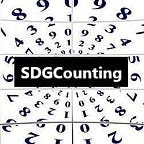SDG GOAL 2 — ZERO HUNGER
End hunger, achieve food security and improved nutrition, and promote sustainable agriculture
The Targets
2.1
By 2030, end hunger and ensure access by all people, in particular the poor and people in vulnerable situations, including infants, to safe, nutritious and sufficient food all year round
2.2
By 2030, end all forms of malnutrition, including achieving, by 2025, the internationally agreed targets on stunting and wasting in children under 5 years of age, and address the nutritional needs of adolescent girls, pregnant and lactating women and older persons
2.3
By 2030, double the agricultural productivity and incomes of small-scale food producers, in particular women, indigenous peoples, family farmers, pastoralists and fishers, including through secure and equal access to land, other productive resources and inputs, knowledge, financial services, markets and opportunities for value addition and non-farm employment
2.4
By 2030, ensure sustainable food production systems and implement resilient agricultural practices that increase productivity and production, that help maintain ecosystems, that strengthen capacity for adaptation to climate change, extreme weather, drought, flooding and other disasters and that progressively improve land and soil quality
2.5
By 2020, maintain the genetic diversity of seeds, cultivated plants and farmed and domesticated animals and their related wild species, including through soundly managed and diversified seed and plant banks at the national, regional and international levels, and promote access to and fair and equitable sharing of benefits arising from the utilization of genetic resources and associated traditional knowledge, as internationally agreed
2.a
Increase investment, including through enhanced international cooperation, in rural infrastructure, agricultural research and extension services, technology development and plant and livestock gene banks in order to enhance agricultural productive capacity in developing countries, in particular least developed countries
2.b
Correct and prevent trade restrictions and distortions in world agricultural markets, including through the parallel elimination of all forms of agricultural export subsidies and all export measures with equivalent effect, in accordance with the mandate of the Doha Development Round
2.c
Adopt measures to ensure the proper functioning of food commodity markets and their derivatives and facilitate timely access to market information, including on food reserves, in order to help limit extreme food price volatility
Resources
- Metadata compilation for Goal 2- as of March 29, 2016.
2. Presentation of Tier III indicators by the UNFAO
3. The United Nations Sustainable Development Platform, under the Department of Economic and Social Affairs
4. The Sustainable Development Fund
5. The International Fund for Agricultural Development (IFAD)
- A specialized agency of the UN. Dedicated to funding and development for eradicating rural poverty and insuring food security.
6. Food and Agriculture Organization of the United Nations
- the UNFAO is the UN agency focusing on food security, all forms of agriculture, nutrition and sustainability, among other subjects. Provides multiple data collection formulas and definitions for Goal 2.
7. The World Food Program
- Part of the UN system, the world’s largest hunger fighting humanitarian agency. A sister agency of UNFAO and IFAD.
8. UNICEF Nutrition
- the Nutrition and hunger arm of UNICEF, the UN entity focused on the needs of young people and women in developing countries. Will provide data and program support for SDG 2.
9. UN campaigns for Goal 2
